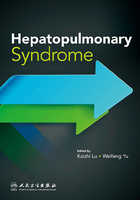
上QQ阅读APP看书,第一时间看更新
Outlook
In conclusion, HPS is a severe complication of cirrhosis, leading to dyspnea and cyanosis in patients. To date, the most effective and radical treatment is LT. Although a variety of important mechanisms mentioned above have been used to explain the onset and progression of HPS, certain pathogeneses are still unclear, which has hampered the development of effective therapeutic methods. Based on a large body of experimental and clinical studies, we can speculate that all pathological changes of HPS, such as ventilation-perfusion (V/Q) mismatch, diffuse limitation of oxygen and direct arteriovenous connections, may result from the dilatation of pulmonary capillaries that dilate to 15-500 μm (n: 8-15 μm) due to the impaired liver function,the imbalance of vasoactive substances, intestinal endotoxemia, monocyte/macrophage activation as well as angiogenesis. Therefore, the concrete mechanisms mentioned above may become the potential therapeutic methods for HPS in the near future. Meanwhile in later work, other important points, missing in previous research, are also worth noting. These points include:does the increased bilirubin in cirrhosis patients contribute to the onset and development of HPS? Can some key substances in the serum of patients with cirrhosis be explored to represent a suitably predictor for HPS? Can some pharmacologic and genetic approaches, based on the experimental research, be clinically used to ameliorate the symptoms of HPS? Will the inhibition of cytokines generation from dysfunctional liver as described above be more effcient to prevent the progression of HPS? All these interesting and important questions will be assessed in the near future.